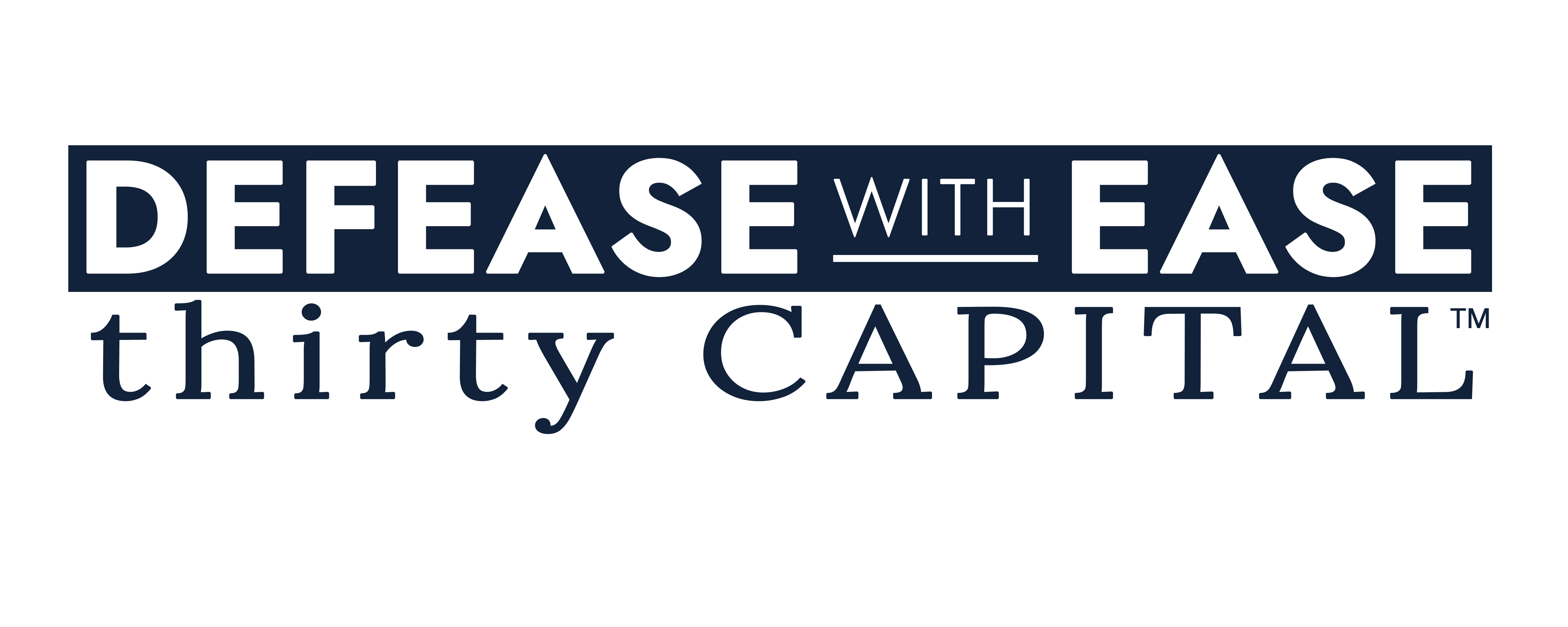For many commercial real estate (CRE) owners, operators, and decision-makers, the cost of debt is often reduced to a single number: the interest rate. But that number only tells part of the story. The true cost of debt is made up of multiple variables—both direct and indirect—that can significantly impact cashflow, returns, and deal flexibility.
At Defease With Ease | Thirty Capital, we work with CRE professionals every day to move beyond surface-level comparisons and into robust debt cost analysis, ensuring they understand what they’re really paying for and how those costs align with their cashflow and investment strategy.
This article walks through the key components of the true cost of loan origination and management, factors to analyze, and where strategic planning (and advisory insight) can lead to meaningful savings and risk mitigation.
What Is the “True Cost” of Debt?
Looking only at the interest rate ignores the layers of costs (and risks) baked into the structure of a loan, some of which may not materialize until years down the line. The true cost of debt includes:
- Interest Rate (fixed or floating + spread)
- Closing Costs and Fees (origination, legal, third-party)
- Prepayment Penalties (yield maintenance, defeasance, exit fees)
- Hedging Costs (rate caps, swaps, and collars)
- Covenant Impact (cash management, lockbox triggers, reserves)
- Operational Flexibility (refi windows, transfer rights, assumptions)
- Opportunity Costs (locked equity, missed lower-rate windows)
1. Interest Rate: Just the Starting Point
While the headline rate is often the first number people focus on, it’s important to understand a few things with fixed and floating rate debt.
- Fixed rates often include a premium based on duration and market conditions.
- Floating rates require assumptions about forward-looking SOFR or other floating rate curves—not just today’s base rate.
Example:
An owner is comparing a floating rate of SOFR + 125 bps vs. a fixed rate of 6.00%. If SOFR is currently 4.75%, both options appear similar. But modeling based on the forward curve may show SOFR declining in 18 months, meaning the floating rate could ultimately result in lower debt service.
2. Fees and Closing Costs
These are often overlooked in rate comparisons but can vary significantly between lenders. Common costs include:
- Origination Fees: Typically 0.5–2.00% of loan amount
- Legal Fees: $10,000–$50,000 depending on lender complexity
- Appraisals, Environmental, Title: Another $10,000–$30,000+
- Servicing/Exit Fees: Sometimes baked into payoff or cash management
Example:
A bank loan with a 50 bps lower interest rate than agency may seem more attractive — but if it comes with $100K more in closing costs and a higher servicing fee, that lower rate may cost you more over a 3-year term.
3. Prepayment Penalties
This is one of the most misunderstood and underappreciated components of debt cost. Types of prepayment structures include:
- Yield Maintenance: The borrower repays lender as if the loan remained to maturity. This can be expensive when interest rates decline.
- Defeasance: This option substitutes collateral with securities to replicate loan payments. It can be more flexible than yield maintenance but still costly.
- Exit Fees / Lockout Periods: This is often seen in bridge loans or with balance sheet lenders.
Example:
A sponsor planning to sell in year 5 opts for a 10-year fixed loan with yield maintenance. Interest rates fall by year 5 and the prepayment penalty exceeds $800K, wiping out a portion of their sale proceeds.
4. Hedging Costs
For floating-rate loans, rate caps or swaps are often required by lenders. These aren’t free, and pricing can change dramatically with market volatility.
- Rate Cap Premiums: These can range depending on term, notional amount, and strike rate, as well as market dynamics and expected future rate cuts/hikes.
- Swaps: Typically, these have no upfront cost, but you may be giving up potential rate savings if the market falls.
- Collars/Floors: These add complexity (and sometimes additional cost) to manage both upside and downside.
Example:
A borrower takes a $25M floating-rate loan and is required to purchase a 2-year cap with a 3.00% strike. The premium is $250K. While this is necessary for risk mitigation, it must be included in any debt cost comparison.
5. Covenant Impact and Operational Flexibility
Lenders often impose structural requirements that have indirect financial costs:
- Cash Management Triggers: These are Debt-Service Coverage Ratio (DSCR) thresholds that can force lockbox sweeps.
- Reserve Accounts: This includes tenant improvements, leasing commissions, or CapEx reserves that rest
 rict use of operating cashflow.
rict use of operating cashflow. - Transfer or Assumption Restrictions: These can limit exit strategies or cause buyer friction.
Example:
An owner secures a lower-rate loan with aggressive covenants that trigger a cash sweep if DSCR drops below 1.25x. In year 2, lease-up takes longer than expected, triggering the sweep and restricting $400K in available cash for tenant improvements, delaying stabilization.
6. Opportunity Cost and Strategic Mismatch
Taking a long-term fixed loan with large prepayment penalties may eliminate the ability to refinance into lower rates or extract equity if values increase. Similarly, under-leveraging to get better pricing may limit returns in a rising rate environment.
Example:
A borrower chooses a conservative 55% LTV loan at 5.75% vs. a 65% LTV loan at 6.00%. Over 3 years, net operating income (NOI) grows significantly, reducing the effective LTV and creating substantial equity. However, due to prepayment restrictions and a large penalty, the borrower can’t refinance to access the trapped equity despite the improved property performance.
Why This Matters Now More Than Ever
The interest rate landscape has shifted dramatically in just the past 24 months. Many owners, sponsors, and decision-makers are grappling with maturing loans, higher refi costs, and more conservative lender underwriting. This means that every basis point and every hidden cost matters. A transaction-first mindset won’t cut it. You need an advisory-driven debt strategy that includes full scenario analysis, risk modeling, and capital planning.
At Defease With Ease | Thirty Capital, our advisory team helps CRE professionals:
- Evaluate total debt costs across the portfolio and its assets
- Model long-term impact of prepayment and hedging
- Align financing terms with business plans and cashflow
- Time rate cap purchases to reduce costs and maximize flexibility
- Build refinancing and exit strategies into debt decisions from day one
Final Thought: Don’t Just Compare Rates — Compare Outcomes
Two loans with identical interest rates can have radically different all-in costs and very different implications for operational strategy, cashflow, and investor returns. Smart CRE professionals aren’t just rate shopping—they’re building financing structures that work with their business plan, not against it.
Let’s put your next deal under the microscope.
If you’re exploring refinancing, managing a rate cap renewal, or looking to optimize your debt, we can help you understand the full picture — not just the rate on the term sheet. Book your free strategic debt review today.




